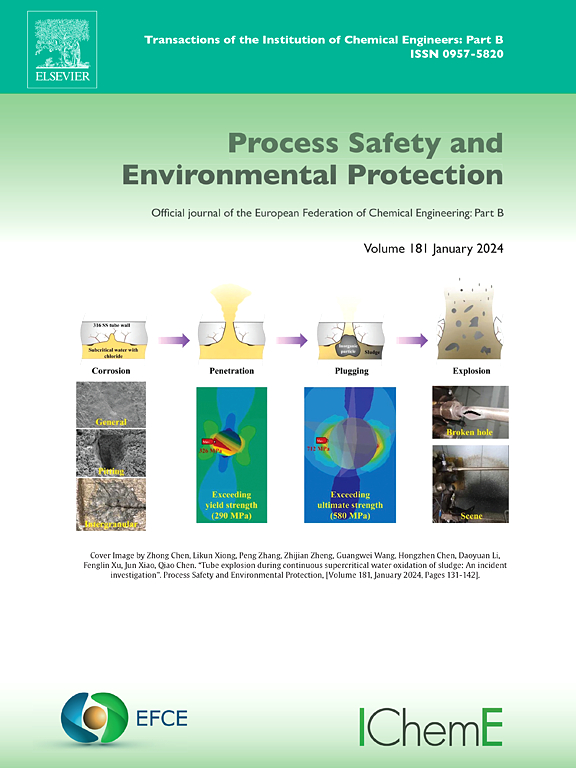办公楼暖通空调系统的环境和能源性能分析:用于空调和照明设施节能的机器学习策略
IF 6.9
2区 环境科学与生态学
Q1 ENGINEERING, CHEMICAL
引用次数: 0
摘要
暖通空调系统消耗约40% %的建筑能源,使其成为减少能源使用和二氧化碳排放的主要目标。传统的优化和故障检测方法可能不再满足关键效率和热舒适标准。人工智能模型在改进的传感器技术的支持下,通过利用大型数据集提供强大的解决方案。本研究深入探讨了各种能源消耗预测方法,从传统的分析模型推进到增强集成的机器学习技术。利用k -最近邻回归(K-NN)、额外树回归(ETR)、投票混合回归(VHR)和多层感知器回归(MLPR)等四种不同的回归树模型预测办公楼暖通空调和照明的能耗。本研究采用真实气象信息和办公建筑能耗,以两年的历史能耗数据为基础。此外,使用8个不同的统计指标来评估4个模型的稳健性。该研究还分析了不同的特征,如建筑位置、大小和天气变量,如何影响每个模型改善长期能源消耗预测的能力。结果表明,ETR方法的预测精度最高,VHR和MPLR紧随其后,而KNN方法的预测精度最低。预测暖通空调能耗的决定系数(R²)和均方根误差(RMSE)分别为0.9943、0.4352和0.9943、0.4500。相反,KNN显示R²的值为0.988,RMSE的值为0.586,强调了这些预测方法之间明显的性能层次。最后,ETR方法成为准确预测办公楼暖通空调和照明能耗的强大优化工具。本文章由计算机程序翻译,如有差异,请以英文原文为准。
Environmental and energy performance analyses of HVAC systems in office buildings using boosted ensembled regression trees: Machine learning strategy for energy saving of air conditioning and lighting facilities
HVAC systems consume around 40 % of a building’s energy, making them a primary target for reducing energy use and CO2 emissions. Traditional optimization and fault detection methods may no longer meet critical efficiency and thermal comfort standards. Artificial intelligence models, supported by improved sensor technology, offer powerful solutions by leveraging large datasets. This study thoroughly examines various energy consumption prediction methods, advancing from traditional analytical models to boosted-ensembled machine learning techniques. Four different regression tree models, including K-Nearest Neighbors Regression (K-NN), Extra Trees Regressor (ETR), Voting Hybrid Regression (VHR), and Multi-Layer Perceptron Regression (MLPR), are utilized to predict energy consumption for HVAC and lighting in office buildings. The study uses real meteorological information and office building energy consumption based on two years of historical energy use data. Moreover, eight distinct statistical indicators are used to evaluate the robustness of the four models. The study also analyzes how different features, such as building location, size, and weather variables, affect each model's ability to improve long-term energy consumption forecasting. The results demonstrate that the ETR approach provides the highest prediction accuracy, followed closely by VHR and MPLR, whereas KNN shows the lowest accuracy. The coefficient of determination (R²) and the root mean square error (RMSE) for predicting HVAC energy consumption are 0.9943 and 0.4352 for ETR and 0.9943 and 0.4500 for VHR, respectively. Contradictively, KNN displays values of 0.988 for R² and 0.586 for RMSE, underscoring a clear performance hierarchy among these predictive methods. Conclusively, the ETR method emerges as a powerful optimization tool for accurately predicting the energy consumption of HVAC and lighting in office buildings.
求助全文
通过发布文献求助,成功后即可免费获取论文全文。
去求助
来源期刊

Process Safety and Environmental Protection
环境科学-工程:化工
CiteScore
11.40
自引率
15.40%
发文量
929
审稿时长
8.0 months
期刊介绍:
The Process Safety and Environmental Protection (PSEP) journal is a leading international publication that focuses on the publication of high-quality, original research papers in the field of engineering, specifically those related to the safety of industrial processes and environmental protection. The journal encourages submissions that present new developments in safety and environmental aspects, particularly those that show how research findings can be applied in process engineering design and practice.
PSEP is particularly interested in research that brings fresh perspectives to established engineering principles, identifies unsolved problems, or suggests directions for future research. The journal also values contributions that push the boundaries of traditional engineering and welcomes multidisciplinary papers.
PSEP's articles are abstracted and indexed by a range of databases and services, which helps to ensure that the journal's research is accessible and recognized in the academic and professional communities. These databases include ANTE, Chemical Abstracts, Chemical Hazards in Industry, Current Contents, Elsevier Engineering Information database, Pascal Francis, Web of Science, Scopus, Engineering Information Database EnCompass LIT (Elsevier), and INSPEC. This wide coverage facilitates the dissemination of the journal's content to a global audience interested in process safety and environmental engineering.
 求助内容:
求助内容: 应助结果提醒方式:
应助结果提醒方式:


